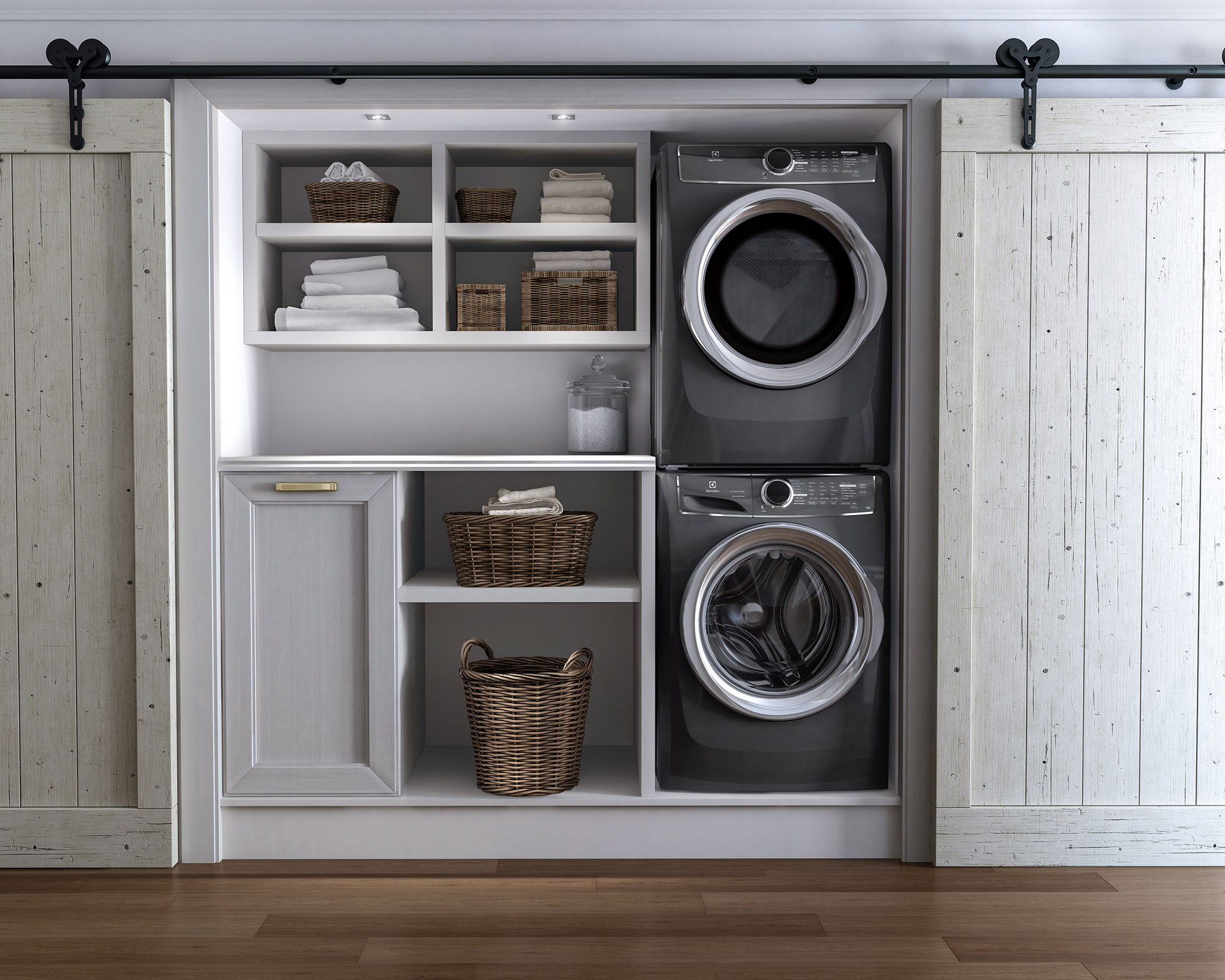Your washer and dryer are key members of your family because you can’t escape dirty laundry. Whether it is your daughter’s soccer uniform, your son’s hockey jersey, your workout gear or your husband’s favourite socks. Laundry is inevitable so having a reliable washer and dryer is very important.
When choosing a laundry pair for your home you need to make sure that it satisfies your needs. Here are a few ‘behind the scenes’ things that you need to consider: space, style, configuration, and capacity.
Space
Decide where you will be installing your new laundry pair and ensure the following:
- The floor is level with no more than a 1” slope.
- A location that can support the installation of a dryer exhaust system.
- Hot and cold water lines within 3’ of the washer hook-up.
- If you have a steam option in your dryer, you will need a cold water line within 3’ of your dryer.
Once all the above criteria have bee satisfied you will need to measure the height, width, and depth of the area where you want to put your washer and dryer. You might think it is a simple measurement, but here’s how you measure correctly.
- Measuring Width: Measure from side to side and make sure to add on 1” on either side for proper air circulation.
- Measuring Depth: Measure from the back to the front and add 6” for door clean, dryer vents and hookups.
- Measuring Height: Measuring from the top to the bottom and if you are thinking about a top load washer, you will need to add at least 20” for door clearance, or else you won’t be able to open it up.
Keep in mind that if you are looking at machines with large capacities more often than not they can be 2-3 inches wider than the usual 27 inches and this is the same case with dryers. So make sure before you go shopping that you have the measurements handy, you don’t want to forget those!
Oh just one more hint, make sure you measure the doors to your home, so that you can be sure the new machines can fit through them.
Style
There are 2 different styles to choose from depending on your preference when it comes to loading your clothes. Do you prefer loading from the top of the machine or rather loading them through the front of the machine? There are many pros and cons surrounding both machines so it is ultimately up to what you prefer. Goodhousekeeping.com has put together a short list that will help in your decision-making.
Front Load
 Pros:
Pros:
- If your laundry room is tight on space, this washer can be stacked.
- Its large capacity allows you to wash more items at once and accommodates bulky items, without sacrificing cleaning performance.
- Many units also let you add steam to the wash cycle to improve stain removal.
- It’s the most energy efficient since its wash cycle uses less water.
- Its high spin speed extracts more moisture from wet loads, which means you can cut down on drying time.
Cons:
- With its advanced technology and special features, a front-loader can be very expensive to purchase.
- Wash cycle time can be longer by 30 minutes or more than the cycles on other types of washers if you select one of the customized settings.
- It may vibrate quite a bit on the spin cycle, especially if it’s not installed on a reinforced floor.
- Because of its design, water can get trapped inside, causing musty odours to form in the washtub and the detergent dispenser.
Top Load
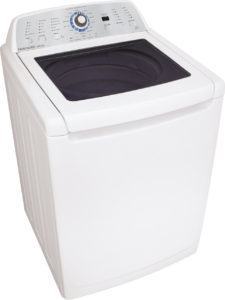 Pros:
Pros:
- You don’t have to bend as much when you’re putting clothes in and taking them out.
- Some top-loaders still give you the freedom to add laundry after the cycle has started.
- Wash cycles are much shorter.
- Minimal vibration.
- You’re unlikely to have musty odours to deal with.
- You’ll find its control panel uncomplicated and intuitive-to-operate.
Cons:
- Cleaning performance may not be up to snuff when it comes to heavily soiled clothes or full-to-the-brim loads.
- The tub may not be able to accommodate your queen-size comforter
- It’s not stackable.
- Wash cycles can’t be adjusted to fit your specific cleaning needs.
- More water can remain in the wet load after the spin cycle, which can lengthen drying time.
Configuration
Top-loading machines can only go side-by-side but if you choose front-loading machines you get a lot more flexibility. Check out the different configurations.
- Stack
If space is an issue in your home a simple solution is to stack your washer and dryer by using a stacking kit. Be aware that the dryer controls could be out of reach, so make sure the height will work for you and your family. This is also a good configuration if you plan on installing your laundry pair in a closet.
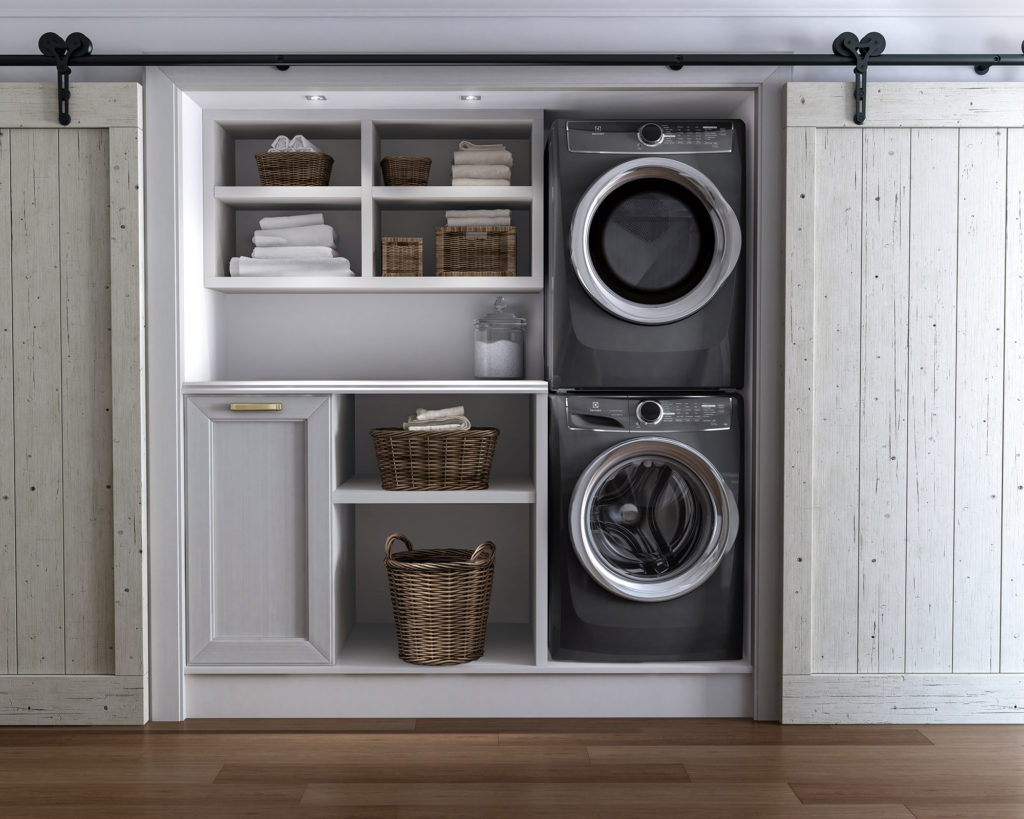
- Pedestals
Installing your washer and dryer on pedestals raises the units to a height that can reduce bending over when loading and unloading your clothes. Also, the pedestals are actual drawers that extend out and provide storage for your laundry supplies. Having this extra storage allows you to keep everything organized and in close proximity to your machines.
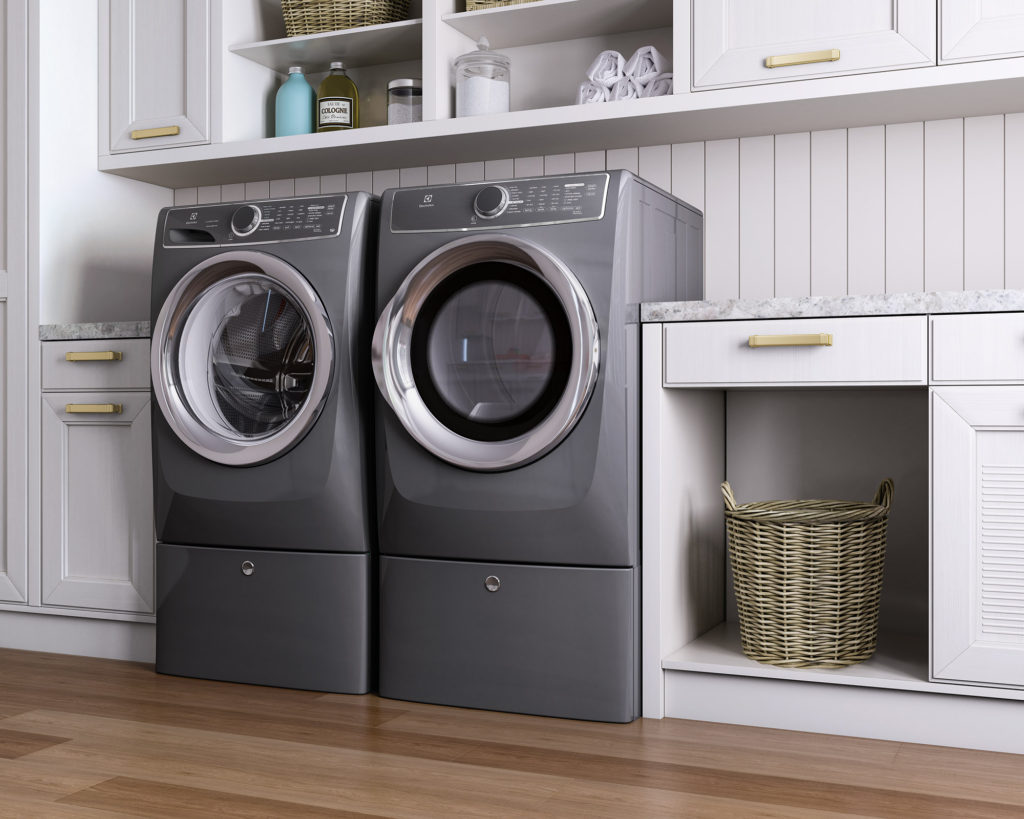
- Stow
Installing your washer and dryer under a counter gives you a perfect place to fold your clothes. It would be very handy to have that flat space to work on. However, you can use that space to store your laundry supplies.
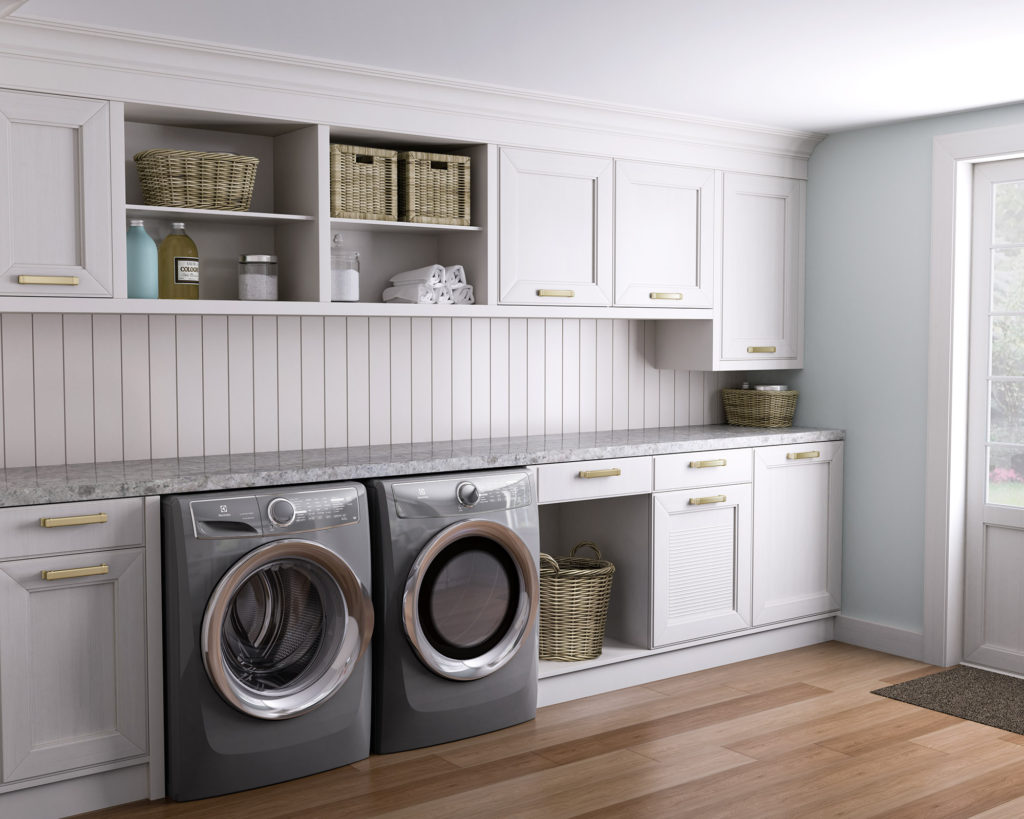
Capacity
Depending on the size of your family you need to ensure that your washer and dryer have a capacity that can accommodate. The more people you have the more dirty laundry you tend to have. Rule of thumb is the larger the capacity the more clothing you can load at one time, which in turn decreases the number of loads you have to do.
Of course, there are a few other things that you need to take into consideration; performance, features and energy efficiency. Stay tuned for more information on those, but for now, this is a good start! Have fun researching which pair fits your lifestyle and needs. Click here for the perfect place to start.
Isabelle, Your Appliance Expert

